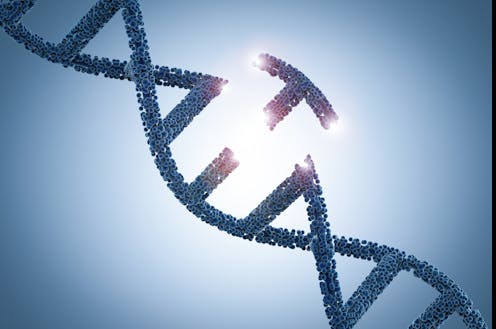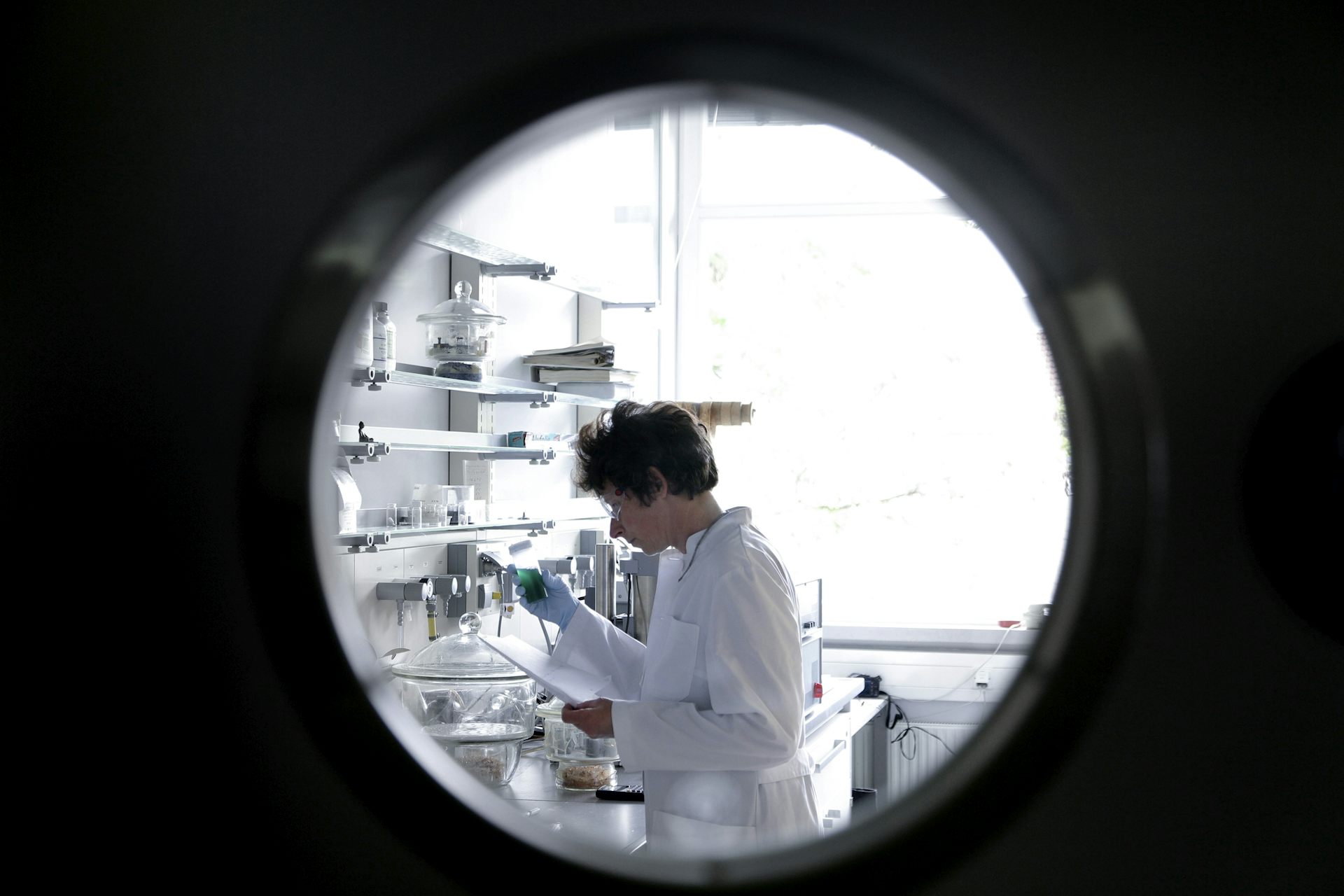Editing fetal genomes is on the horizon − a medical anthropologist explains why ethical discussions
In the absence of clear-cut regulation, who should decide on where and how a technology that could change the course of human health should be applied?

With their primary goal to advance scientific knowledge, most scientists are not trained or incentivized to think through the societal implications of the technologies they are developing. Even in genomic medicine, which is geared toward benefiting future patients, time and funding pressures make real-time ethics oversight difficult.
In 2015, three years after scientists discovered how to permanently edit the human genome, U.S. scientists issued a statement to halt applications of germline genome editing, a controversial type of gene editing where the DNA changes also transfer to the patient’s future biological descendants.
The scientists’ statement called for “open discussion of the merits and risks” before experiments could begin. But these discussions did not happen.
By 2018, at least two babies had been born from germline editing with embryos that had been genetically modified in China. With no preemptive ethics or clear regulatory guidance, you get the occasional “cowboy scientist” who pushes the boundaries of experiments until they are told to stop.
After finding out about the babies, scientists continued to talk – but mostly among themselves. Then in 2020, an international commission report that brought together expert views resounded the same call for societal discussions about whether germline editing could be ethical.
I’m a medical anthropologist and bioethicist who studies the values and experiences driving prenatal gene therapy developments, including genome editing.
Human prenatal genome editing has not happened yet – as far as we know. Prenatal genome editing isn’t the same as editing ex vivo embryos, like the Chinese scientist did, because prenatal editing involves editing the DNA of a fetus visible inside a pregnant person’s womb – without the intent to affect future descendants.
But the societal implications of this technology are still vast. And researchers can already start exploring the ethics by engaging communities well ahead of time.
Engaging communities
You can’t really anticipate how technologies might benefit society without any input from people in society. Prospective users of the technology in particular might have their own experiences to offer. In 2022 in the U.K., a citizens’ jury composed of people affected by genetic disease deliberated. They voted that germline editing of human embryos could be ethical – if a series of specific conditions could be met, such as transparency and equality of access.
Recently in the U.S., the National Council on Disability published a report on their concerns about embryo and prenatal editing. Their key concern was about the potential for more discrimination against people with disabilities.
Some people see preventing the birth of people with certain genetic traits as a form of eugenics, the troubling practice of treating a social group’s genetic traits as unwanted and attempting to remove them from the human gene pool. But genetic traits are often associated with a person’s social identity – treating certain traits as unwanted in the human gene pool can be deeply discriminatory.
Losing a baby to severe genetic disease leads to profound suffering for families. But the same genes that cause disease may also create human identity and community. As the National Council on Disability outlined in its report, people with disabilities can have a good quality of life when given enough social support.
It’s not easy to engage nonscientists in discussions about genetics. And people have diverse values, which means community deliberations that work in one context might not work in another. But from what I’ve seen, scientific developments are more likely to benefit prospective users when the developers of the technology consider the users’ concerns.
Not just about the fetus
Prenatal human genome editing, also known as fetal genome surgery, offers a chance to address cellular disease processes early, perhaps even preventing symptoms from ever appearing. The delivery of treatment could be more direct and efficient than what is possible after birth. For example, gene therapy delivered into the fetal brain could reach the whole central nervous system.
But editing a fetus necessarily involves the pregnant person.
In the 1980s, scientists managed to conduct surgery on a fetus for the first time. This established the fetus as a patient and direct recipient of health care.
Seeing the fetus as a separate patient oversimplifies the maternal-fetal relationship. Doing so has historically downgraded the interests of the pregnant person.
And since editing the fetal genome could harm the expectant parent or require an abortion, any discussion about prenatal genetic interventions also becomes a discussion about abortion access. Editing the genes of a fetus isn’t only about editing that fetus and preventing genetic disease.
Prenatal genome editing versus editing embryos
Prenatal genome editing sits within the broader spectrum of human genome editing, which ranges from germline, where the changes are heritable, to somatic cell, where the patient’s descendants won’t inherit the changes. Prenatal genome editing is, in theory, somatic cell editing.

There’s still a small potential for accidental germline editing. “Editing” a genome can be a misleading metaphor. When first developed, gene editing was less like cutting and pasting genes and more like sending in a drone that can hit or miss its target – a piece of DNA. It may change the genome in intended and sometimes unintended ways. As the technology advances, gene editing is becoming less like a drone and more like a surgeon’s cut.
Ultimately, researchers can’t know whether there would be unintentional, collateral germline edits until decades into the future. It would require editing a significant number of fetuses’ genomes, waiting for these fetuses to be born, and then waiting to analyze the genomes of their future descendants.
Unresolved health equity issues
Another major ethical question has to do with who would get access to these technologies. To distribute prenatal genome therapies equitably, technology developers and health care systems would need to address both cost and trust issues.
Take, for example, new gene-editing treatments for children with sickle cell disease. This disease mostly affects Black families, who continue to face significant disparities and barriers in access to both prenatal care and general health care.
Editing the fetus instead of a child or adult could potentially reduce health care costs. Since a fetus is smaller, practitioners would use fewer gene-editing materials with lower manufacturing costs. More than that, treating the disease early could reduce costs that the patient might accrue over a lifetime.
Nonetheless, all genome editing procedures are expensive. Treating a 12-year-old with sickle cell disease with gene editing currently costs US$3.1 million. While some academics want to make gene editing more affordable, there hasn’t been much progress yet.
There’s also the issue of trust. I’ve heard from families in groups that are underrepresented in genomics research that say they’re hesitant to participate in prenatal diagnostic research if they don’t trust the health care team doing the research. This type of research is the first step to building models for treatments such as prenatal genome editing. Moreover, these underrepresented families tend to have less trust in the health care system at large.
Although prenatal gene editing holds immense potential for scientific discovery, scientists and developers could invite the prospective users – the people who stand to gain or lose the most from this technology – to the decision-making table for the clearest picture of how these technologies could affect society.
Julia Brown receives funding from the National Human Genome Research Institute.
Read These Next
RFK Jr. wants to scrutinize the vaccine schedule – but its safety record is already decades long
Federal officials are questioning the safety of the vaccine series children receive. Here’s the story…
What are gas stove manufacturers trying to hide? Warning labels
The gas industry is opposed to labels that warn consumers of the potential harms of gas stoves.
Sudan’s civil war: A visual guide to the brutal conflict
Since fighting broke out in April 2023, some 150,000 people have been killed in Sudan and an estimated…






